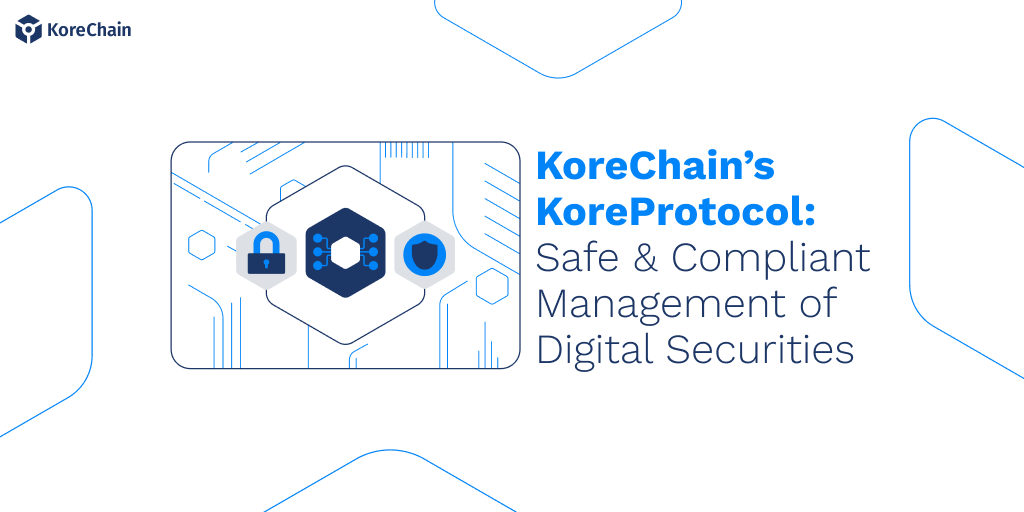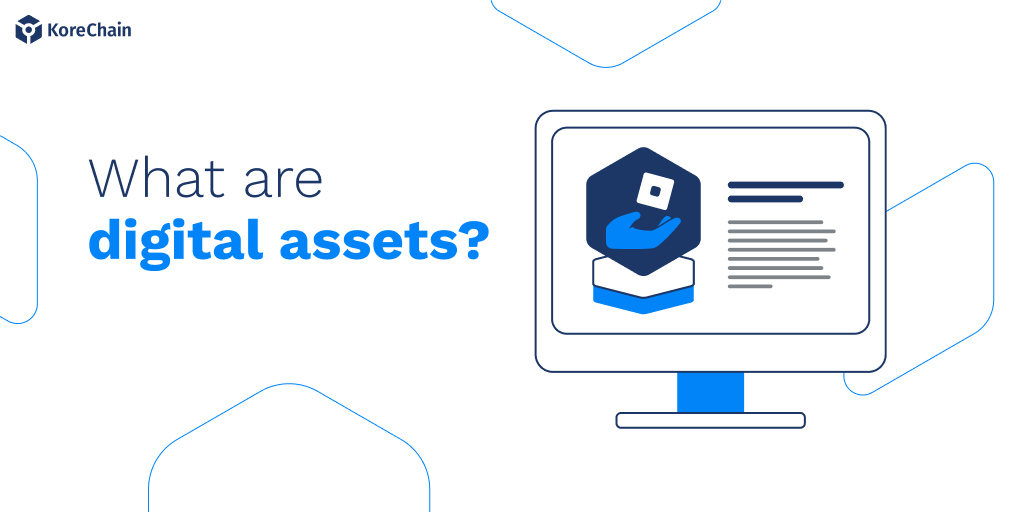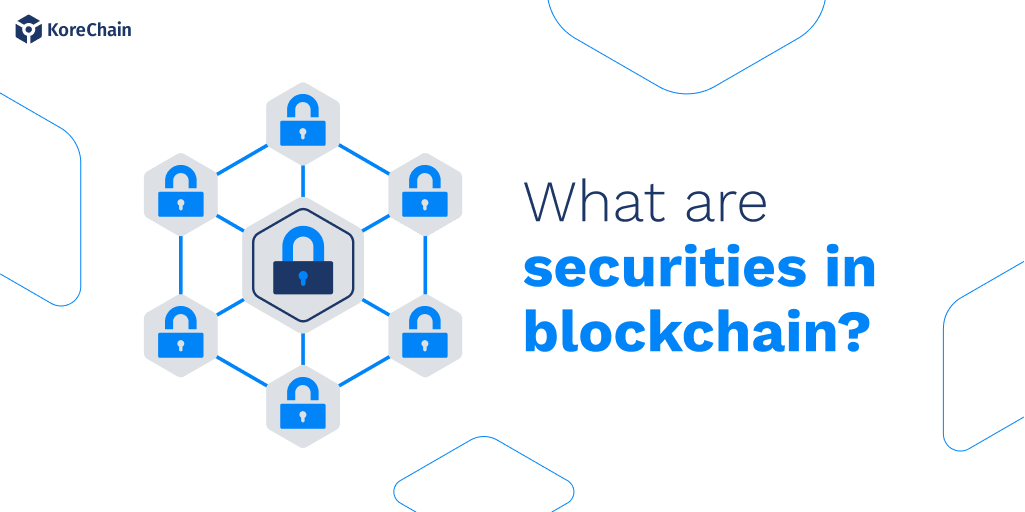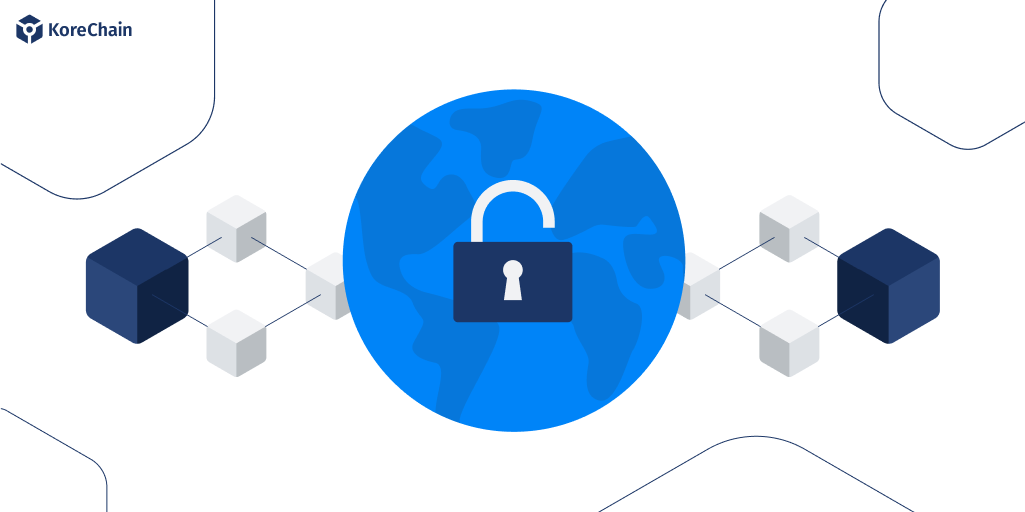Introduction to KoreChain Infrastructure
The KoreChain infrastructure provides a digital securities protocol for a permissioned blockchain that enables fully compliant securities transactions in multiple jurisdictions. The KoreProtocol is a specificaton for managing securities throughout their complete lifecycle phases, the main ones being issuance (birth), trading, corporate actions, and dissolution or exit.
The KoreProtocol has been specifically designed to handle financial securities. It is not a protocol for tokens or cryptocurrencies. It does not require mining by a decentralized community of unknown miners who must be incentivized to perform mining. The selection of Hyperledger Fabric as the base on which to build the KoreChain was dictated by the requirements of securities law, corporate law, and the need for flexibility and richness of securities transactions in the private capital markets.
Diverse Securities Types and the KoreProtocol
The KoreProtocol handles many types of securities, not just equity. It includes options, warrants, units, bonds, debentures, promissory notes, loans, SAFE, commercial paper, etc. All of these are represented as digital securities implemented in accordance with the specifications of the KoreProtocol and based on the underlying KoreContract, as designed in cooperation with securities lawyers.

Authorization Basis for Securities Transactions
Every securities transaction has a source that authorizes that transaction. The authorizing basis can be securities law, corporate law, offering documents, shareholders’ agreements, directors’ resolutions, voting results, or any contract. There can be more than one authorizing basis.
Example of Dividend Authorization
For example, a dividend payment derives its authorization from two documents: the shareholders’ agreement that contains a clause that the company may pay a dividend and a directors’ resolution that a specific dividend shall be paid.
KoreContract and Ricardian Contracts
Here is an example of a clause in a shareholders agreement stating the company’s dividend policy:
3.2.2. The Shareholders are entitled to the distribution of the profits of the Company for each Shareholder in proportion to the number of Shares that the Shareholder holds.
An accompanying directors resolution that declares dividends might be (ignoring preambles and other clauses):
NOW, THEREFORE, BE IT RESOLVED, that this corporation declares a dividend of $[Amount] per share of Common Stock to holders of record as of [Date], payable on [Date], subject to compliance with applicable provisions of law in [Jurisdiction(s)].
The KoreChain converts each authorizing document into a Ricardian contract, the KoreContract, which codifies deep references to clauses, variables, and data. The KoreContract is then digitally signed to make it tamper-evident. The term ‘contract’ is used here in the sense of legal contracts and not as ‘smart contracts’ (which, ironically, are neither smart nor true contracts). This implies that KoreContracts must be able to prove that they adhere to the legal doctrinal principles of contracts.
Transaction Integrity and Referential Integrity on KoreChain
The KoreProtocol, therefore, provides the functions to support a sound legal basis for KoreContracts to the extent that is possible in an electronic contract. Obviously, the structure and terms of a KoreContract are provided by the originating parties and their legal counsel; the ability of the KoreProtocol to prove the legal soundness of KoreContracts is dependent on the actual legal clauses and data within the contracts as well as the accuracy and integrity of subsequent transactions.
All securities transactions include references to the associated authorizing documents, parties involved in the transaction, and regulatory filings where required. The diagram to the right shows how immutable referential integrity is achieved on the KoreChain.

Continuing the above example, a dividend payment is not one simple transaction. It contains a number of sub-transactions such as board of directors’ approval of the dividend payout, notification of dividend payment to the company’s transfer agent, disbursement of funds from the company account to transfer agent’s account (with references to the wire or other means of money transfer), and for each shareholder, validation that they are a shareholder of record as of the record date as stipulated in the directors resolution, computation of dividend, confirmation of money transfer to shareholder’s account, and record of acknowledgment if any.
Finally, the company is notified of the completion of dividend payments. Since the KoreConX platform is fully integrated, the company’s dashboard as well as the individual dashboards of each shareholder are updated in real time.
Each of these sub-transactions as well as the full transaction (which may be thought of as a ‘use case’) contain immutable references to immutable and authorizing documents. The KoreProtocol provides for numerous use cases and the complex transactions that implement those use cases.
Use Cases for Financial Instruments
Below, we identify the major use cases for some of these financial instruments.
For equity securities, the main use cases include (details here):
- Issuance
- Trading (incl. trading restrictions)
- Transfers
- Exercise of rights
- Financial participation
- Corporate actions (such as AGM, M&A, exits, etc.)
- External actions (such as regulatory actions)
Other securities also have their own collection of use cases.
Options and warrants
Options and warrants are equity derivative instruments. Use cases of options include granting, vesting, acceleration, exercise, and conversion. Warrants are similar to options, except that they are usually issued in a financing transaction to brokers or investors while options are generally issued to staff, advisors or consultants. While their use cases are slightly different, warrants and options transactions will be quite similar.
Debt securities
Debt securities are more varied and include bonds, debentures, promissory notes, loans, SAFE, and commercial paper. Each of these have similar use cases, such as issuance or grant, potential trading on a secondary market, and finally exercise through payout or conversion to equity at a pre-defined ratio or premium to the price of equity at the time of the grant.
Bonds and debentures are both debt instruments used by companies that wish to raise money without the dilution of issuing stock in the company. Most commonly and in the US, bonds generally refer to debt secured against specific assets while debentures are generally unsecured debt (and therefore carry higher interest). From the perspective of securities transactions, bonds and debentures are issued (or granted) and exercised upon maturity. The treatment of interest payments (installments or lump sum) or redemption of face value of the instrument (as in the case of a zero coupon bond) varies based on the terms of issuance. Further, issuers may issue bonds and debentures that are convertible to equity. These instruments may potentially trade on secondary markets.
Included in the arsenal of debt securities are promissory notes, loans, and commercial paper. All these differ from each other and from bonds and debentures in the level of formality, well-known and defined terms and conditions, and the nature of risk. Commercial Paper is a short-term debt security, with a maturity period that does not exceed 270 days. Commercial paper can be rolled over upon maturity. These debt securities can also have convertible components, making them convertible into equity using defined conversion rates and under various terms and conditions.
SAFE stands for Simple Agreement for Future Equity, designed to replace convertible notes while being compliant with securities regulation. It is similar to a warrant, except that it does not specify a price for the shares. It is also not a traditional debt security, since no interest payments are provided. Conversion to equity happens based on pre-defined events such as future investment rounds.
The KoreProtocol for Capital Raising and Securities Management
Raising capital is a complicated process. It requires a sound understanding of the various avenues open to issuers in both equity and debt. Raising capital is also not a one-time event. Any serious startup should plan for multiple rounds, where each round could focus on one type of capital or even a combination of them.
Each of these types of securities impacts the captable in different ways during issuance, transfer, trading, payments, exercise, conversion, and redemption.
The KoreConX all-in-one platform deals with the changes to the captable, while the KoreChain creates immutable records of these transactions. The value of the KoreChain lies in the independent validation of these transactions and their results by nodes that are parties to these transactions, have subject matter expertise, or have fiduciary responsibilities to the parties to these transactions.
The results are available on the DLT for future reference, verification, auditing, and reporting.
Conclusion: Comprehensive Management of Securities Lifecycle
The KoreProtocol is designed to handle the complex use cases of capital raise and the numerous sub-transactions that implement these use cases, while remaining compliant with securities regulation in multiple jurisdictions. It is important to note that the KoreProtocol is not restricted to just the issuance or even just the trading of these securities.
In fact, the KoreProtocol handles the complete lifecycle of the various types of securities. It provides for the effects of corporate actions, regulatory actions, and other external events (such as, for example, temporary halt on trading by a secondary market operator due to extraordinary circumstances).
At a deeply granular level, the KoreProtocol ensures immutable referential integrity to satisfy transparency and audibility.









